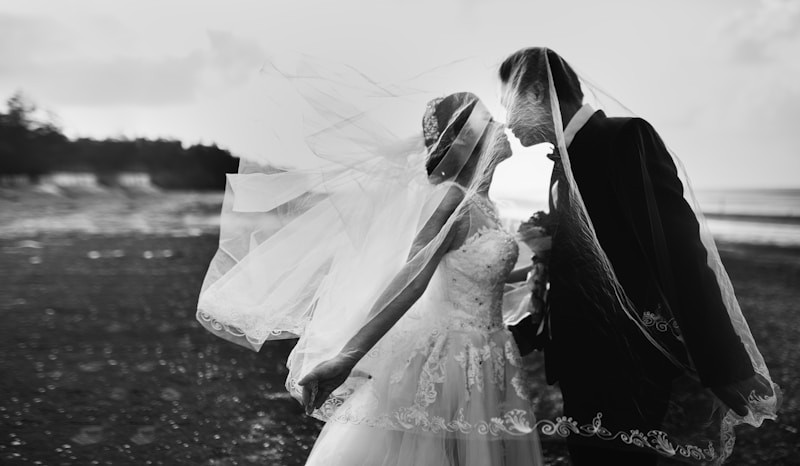Understanding Wedding Allocations and Consumer Behavior: Trends, Insights, and Strategies
Understanding Wedding Allocations and Consumer Behavior: Trends, Insights, and Strategies
Introduction to Wedding Allocations and Consumer Behavior
Weddings are a significant life event that often entails substantial financial investment and emotional expenditure. Understanding how couples allocate their wedding budget can provide deep insights into consumer behavior, helping vendors optimize their offerings and marketing strategies. This article delves into the intricacies of wedding allocations and consumer behavior, exploring trends, spending habits, and essential insights for wedding professionals.
The Importance of Wedding Allocations
Wedding allocation refers to how couples distribute their wedding budget across various categories such as venues, catering, attire, photography, and entertainment. According to industry statistics, the national average cost of a wedding in the United States is around $28,000, although this figure can vary significantly based on location, season, and personal preferences.
Common Wedding Budget Categories
| Category | Percentage of Budget |
| Venue | 30% |
| Catering | 25% |
| Photography/Videography | 10% |
| Attire | 10% |
| Entertainment | 10% |
| Flowers & Decor | 5% |
| Other Expenses (Invitations, Favors, etc.) | 10% |
As illustrated in the table above, couples usually allocate the largest portion of their budget to the venue, followed closely by catering. These allocations can reveal what couples prioritize for their special day and how consumer behavior in the wedding market shifts over time.
Consumer Behavior Trends in Weddings
Consumer behavior in the wedding industry has been evolving, influenced by various factors such as cultural shifts, economic conditions, and technological advancements. Understanding these trends is crucial for vendors looking to enhance their marketing strategies.
1. The Rise of Personalization
More couples are seeking personalized and unique wedding experiences. This trend has led to an increase in spending on bespoke services, such as customized decor, individualized catering options, and tailored entertainment offerings. Wedding planners who can offer customized solutions are likely to attract more clients.
2. Sustainability and Eco-Friendliness
Recent years have seen a rise in eco-conscious couples prioritizing sustainability in their wedding plans. This has resulted in an increase in budget allocation towards eco-friendly options, such as sustainable catering, second-hand wedding dresses, and locally sourced decorations. Wedding vendors should consider incorporating sustainable practices to appeal to this growing demographic.
3. Tech-Savvy Planning
With the advent of digital technology, online wedding planning has gained immense popularity. Couples are increasingly relying on wedding planning apps, virtual consultations, and online vendor reviews to guide their decisions. Vendors who establish a strong online presence and leverage digital tools will likely capture the attention of tech-savvy couples.

Understanding Consumer Motivations
To effectively tap into the wedding market, it’s essential to understand what motivates couples' spending decisions. Some key motivations include:
- Emotional Significance: Weddings are deeply emotional events, and couples often allocate their budgets based on what will create memorable experiences for themselves and their loved ones.
- Social Influence: Social media and peer influence play a significant role in shaping couples’ ideas about their weddings, often leading to increased spending in certain areas in an attempt to impress guests.
- Value for Money: Couples are increasingly looking for value in their spending. They appreciate quality services and products that justify the expense, leading to a more strategic allocation of funds.
Budgeting Tips for Couples
Couples planning their wedding can benefit from strategic budgeting to ensure a balanced allocation. Here are some practical tips:
1. Set Priorities
Before allocating their budget, couples should discuss what aspects of their wedding matter most to them. Whether it’s the venue, catering, or entertainment, identifying priorities can guide budget allocations effectively.
2. Research and Compare Vendors
Taking the time to research different vendors can reveal competitive pricing and options. Many couples may find that they can save money or find better-quality services by being diligent in their research.
3. Be Prepared for Extras
Unexpected expenses can arise during wedding planning. Allocating a portion of the budget for miscellaneous costs can help couples stay on track without significantly impacting their overall budget.
Marketing Strategies for Wedding Vendors
For wedding vendors, understanding consumer behavior and budget allocations can lead to more effective marketing strategies. Here are key strategies to consider:
1. Highlight Value in Offerings
Vendors should emphasize the value they provide through their services. Couples are more likely to choose vendors who can clearly show how they will enhance the overall wedding experience.
2. Utilize Social Media
Platforms like Instagram and Pinterest are crucial for reaching engaged couples. Vendors should showcase their work, interact with potential clients, and actively engage with emerging wedding trends on these platforms.
3. Offer Customized Packages
Providing customizable service packages allows couples to mix and match offerings according to their budget and preferences, making them more likely to choose a vendor who is flexible in meeting their needs.
Conclusion: Key Takeaways on Wedding Allocations and Consumer Behavior
In summary, understanding the dynamics of wedding allocations and consumer behavior is essential for both couples planning their nuptials and vendors looking to thrive in the wedding market. Couples need to prioritize their spending based on what holds the most value to them, while wedding professionals should adapt their strategies to align with contemporary consumer trends. As the wedding industry continues to evolve, staying informed and responsive to these changes will be crucial for success.
Final Thoughts: Couples are encouraged to embrace the planning process by being mindful of their budget, while vendors should strive to offer products and services that resonate with the current desires of modern couples. By doing so, both parties can contribute to creating memorable and meaningful wedding experiences.
